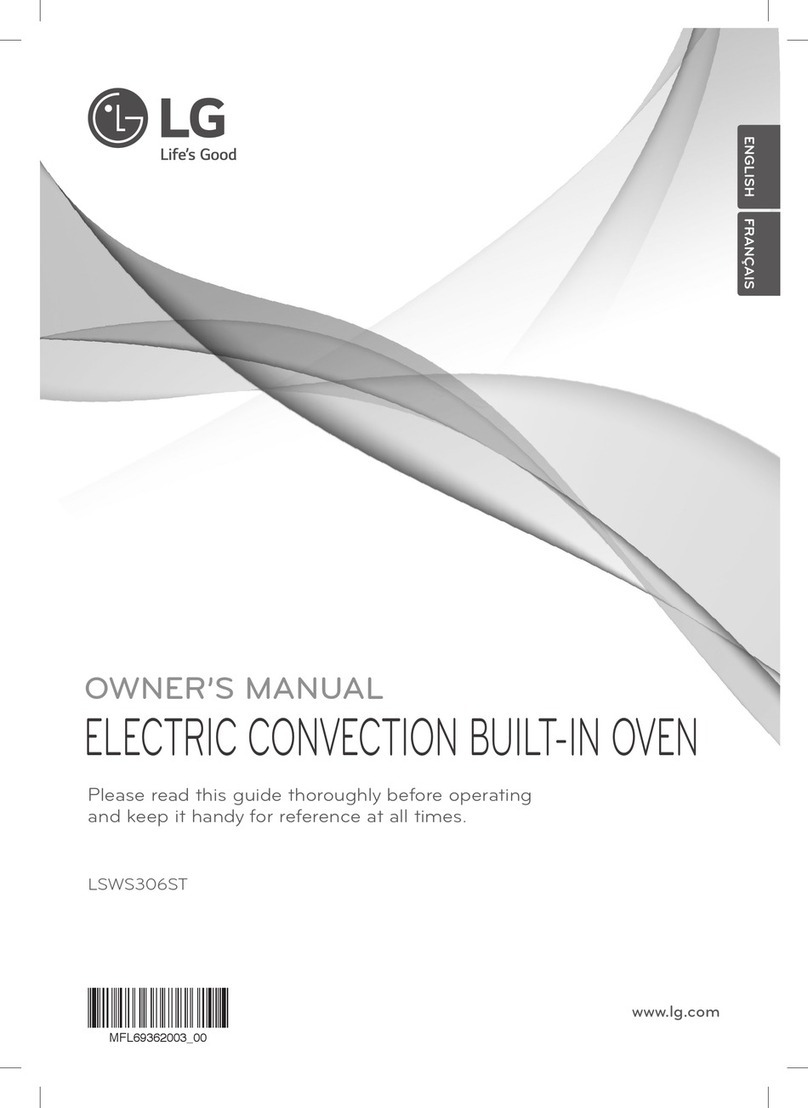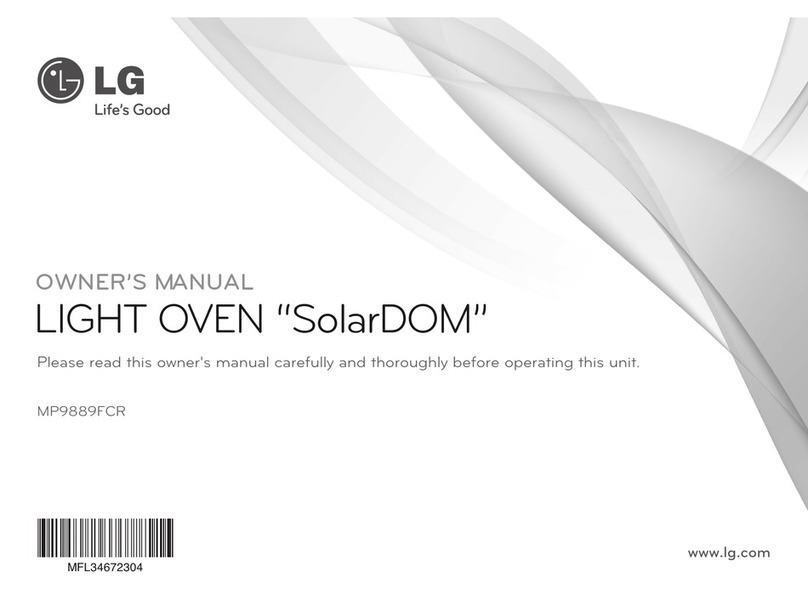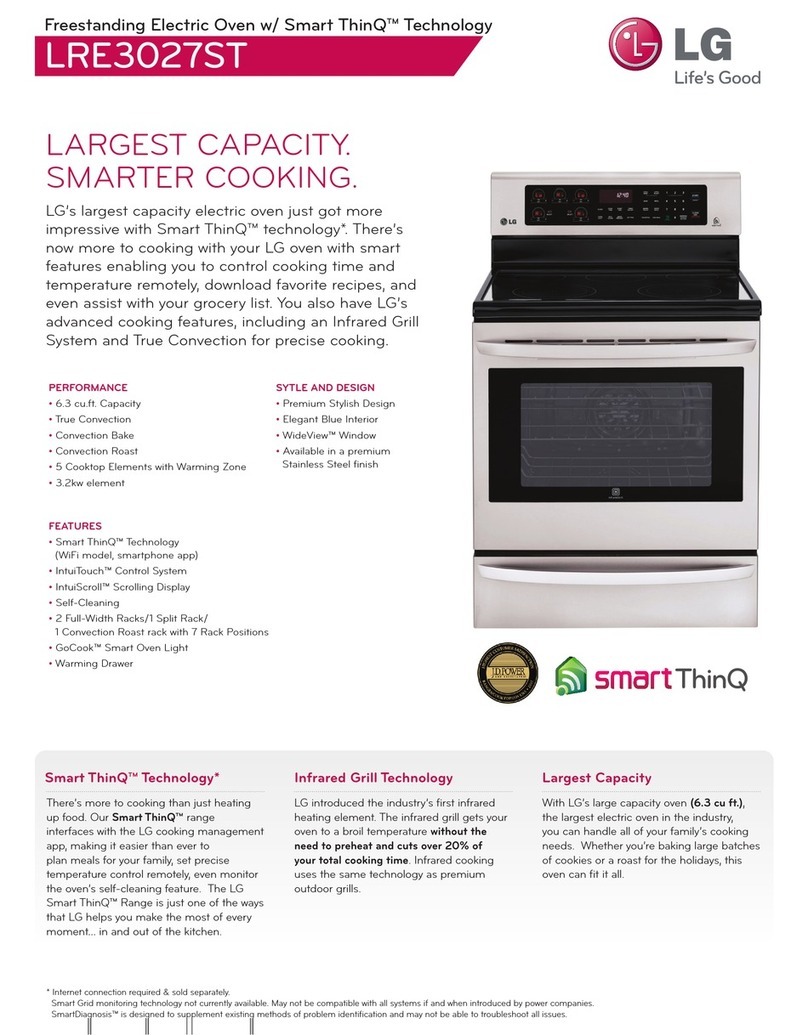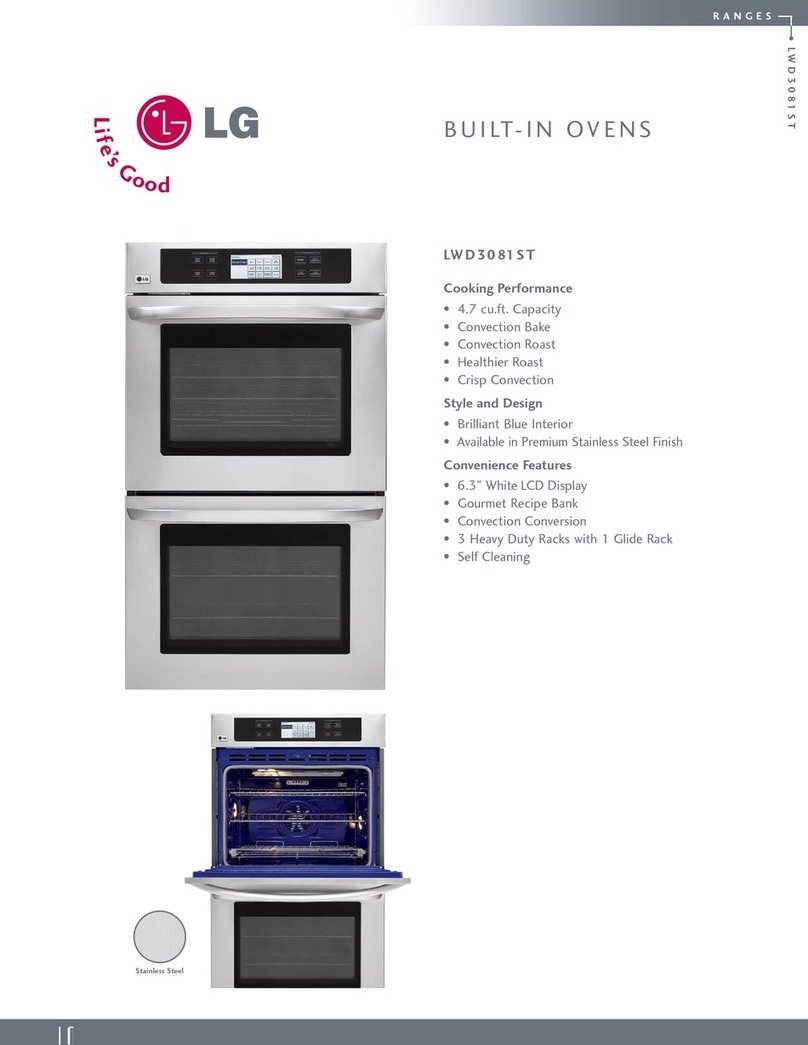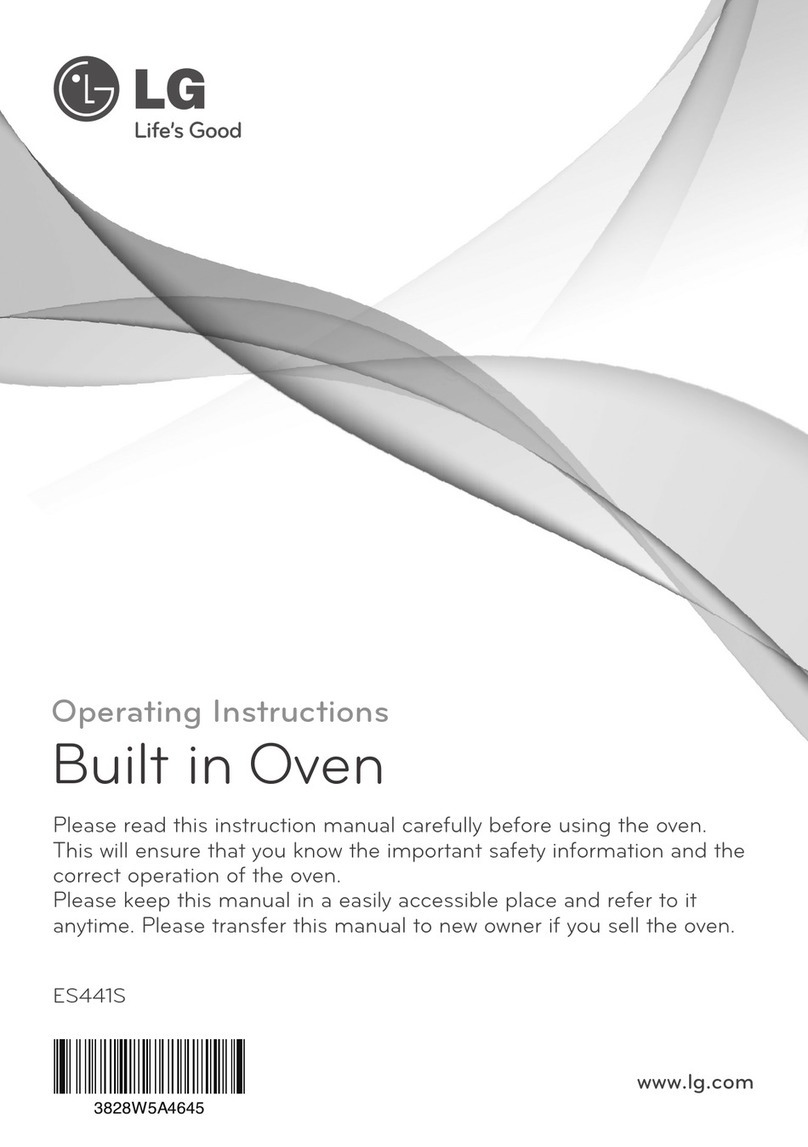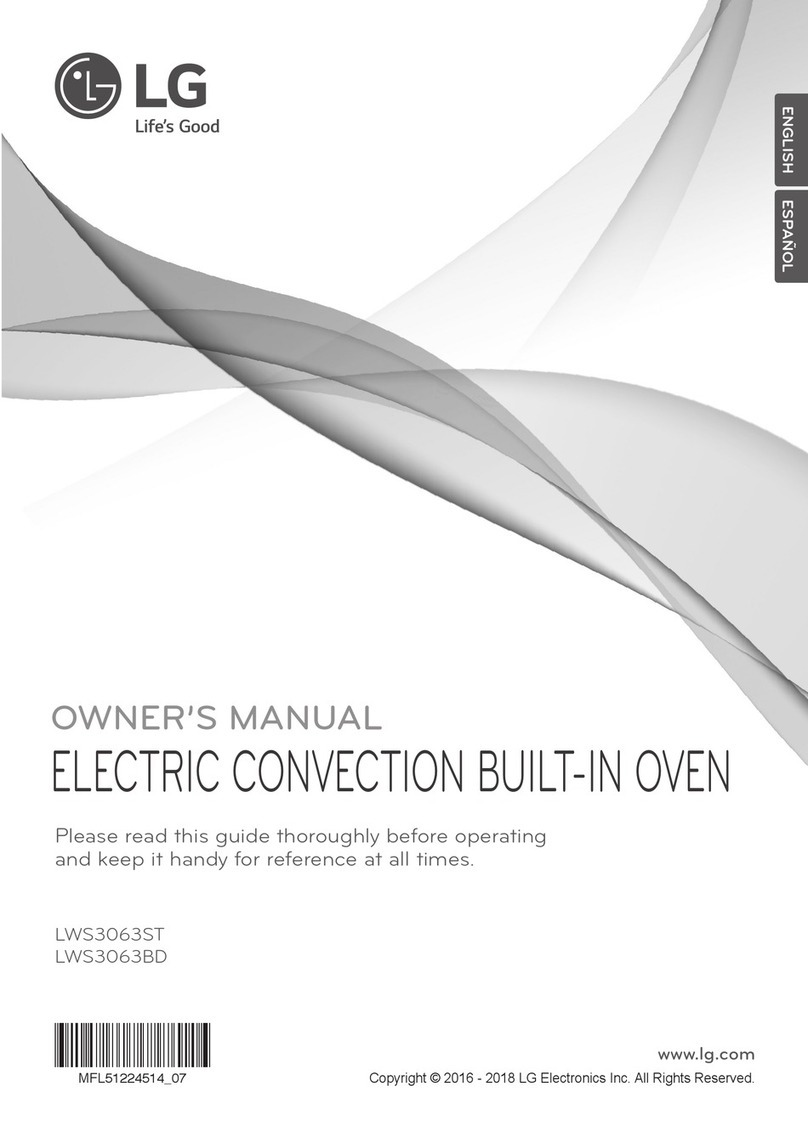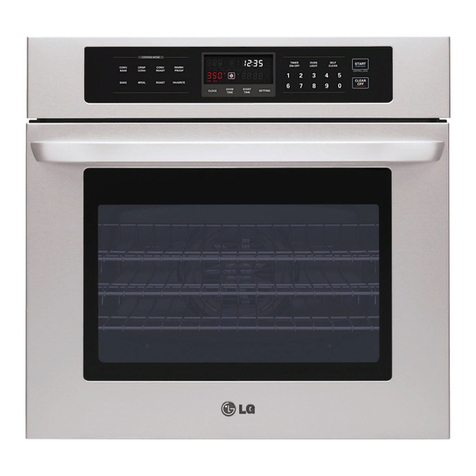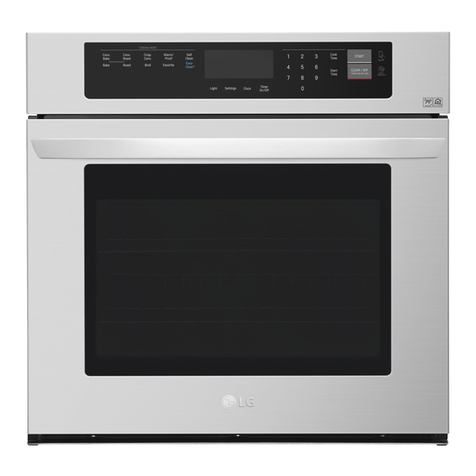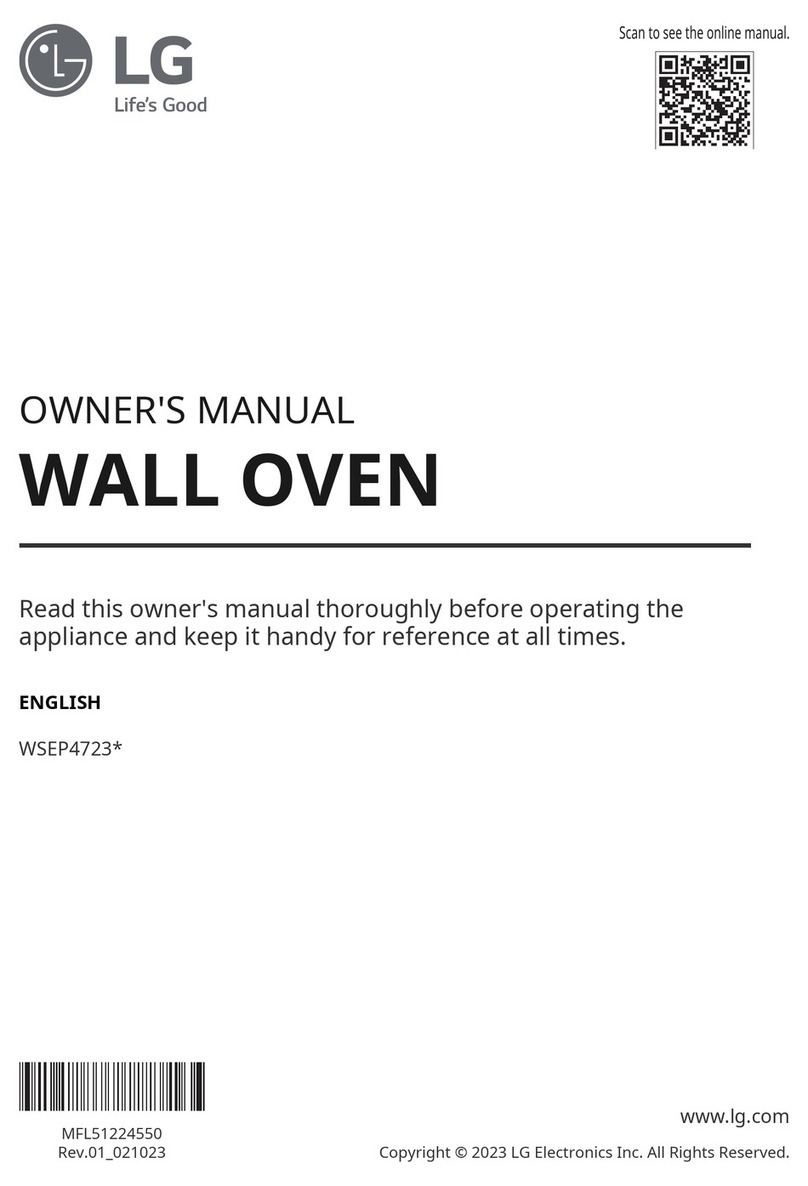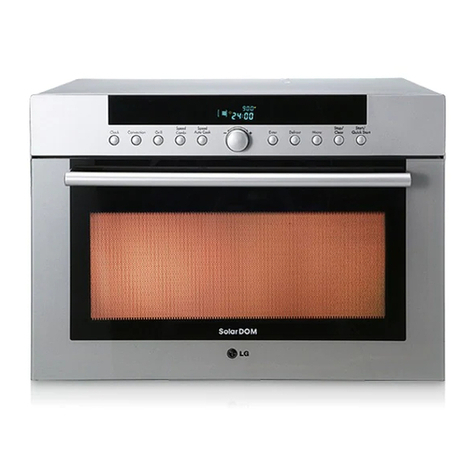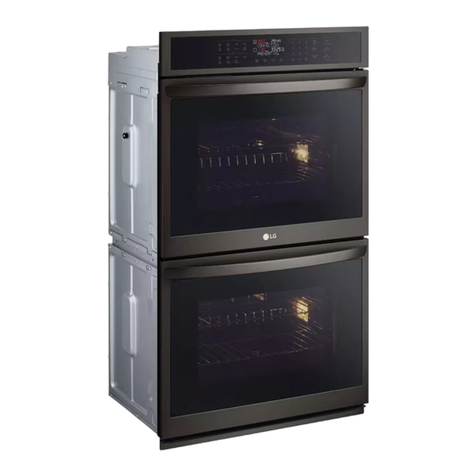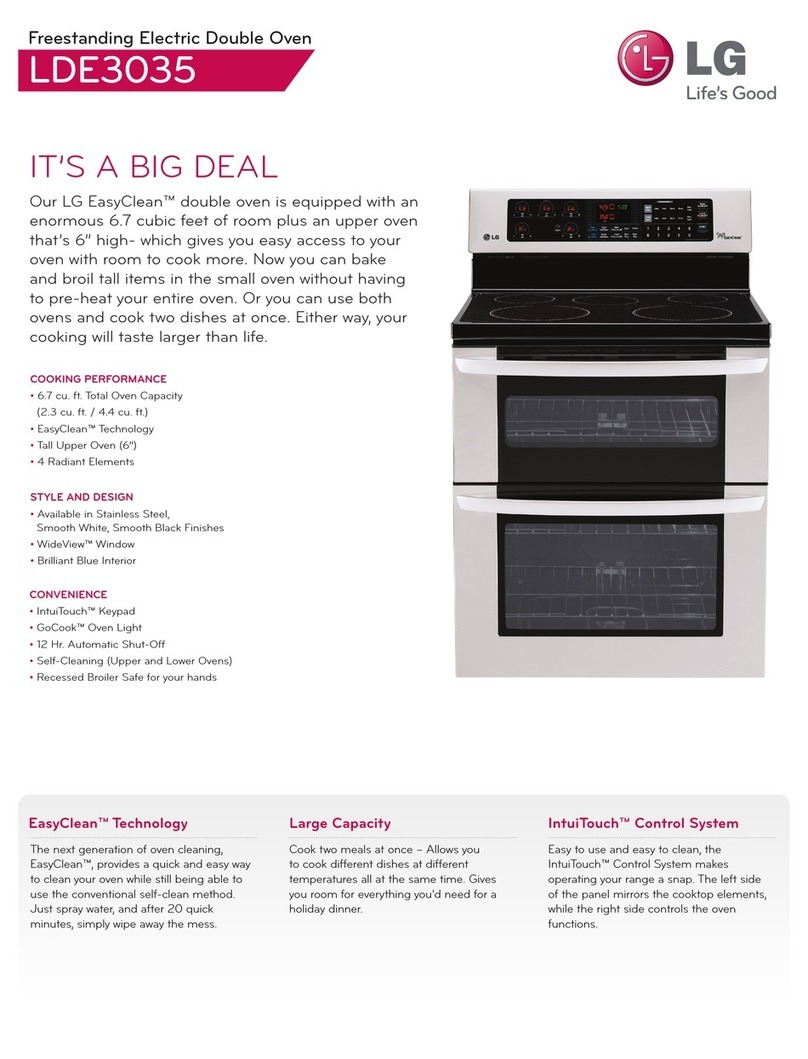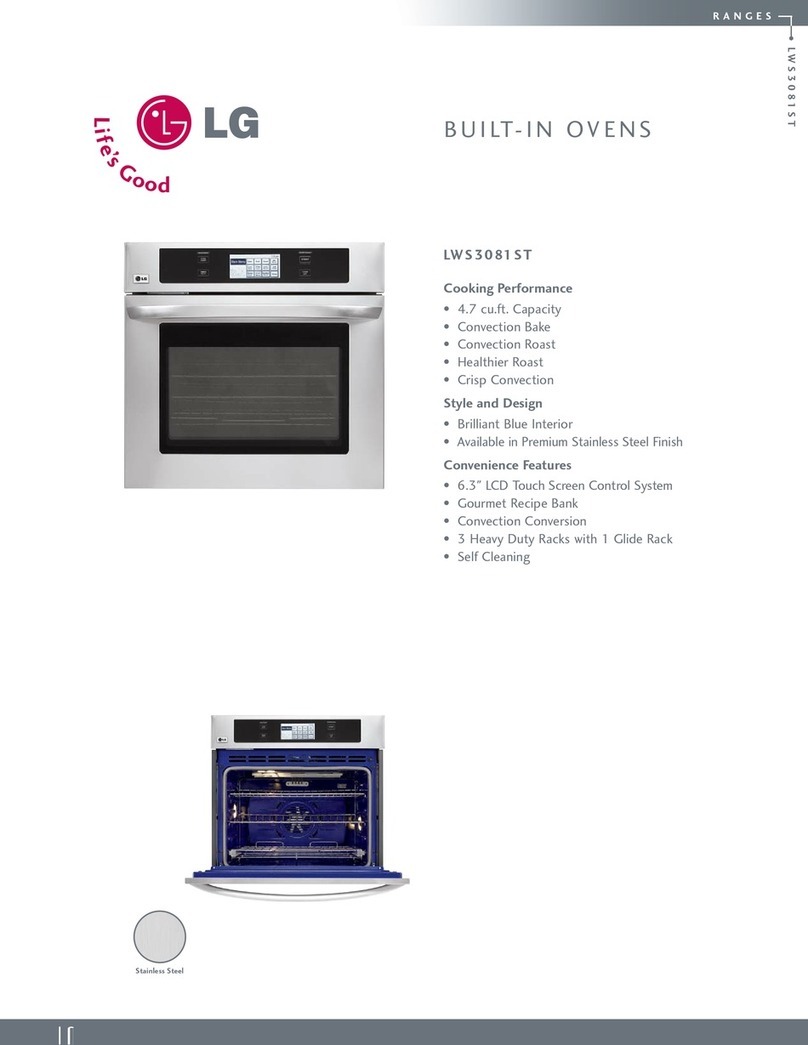5-7
A. PRIMARY INTERLOCK SWITCH TEST
When the door button is slowly depressed with the
door closed, an audible "click" should be heard at the
same time or successively at intervals. When the but-
ton is slowly released, the latches should activate the
switches with an audible "click".
If the latches do not activate the switches when the
door is closed, the switches should be a adjusted in
accordance with adjustment procedure.
Disconnect the wire lead from the primary switch.
Connect the ohmmeter leads to the common (COM)
and normally open (NO) terminal of the switch. The
meter should indicate an open circuit in the door
open condition.
When the door is closed, the meter should indicate a
closed circuit.
When the primary switch operation is abnormal,
make the necessary adjustment or replace the switch
only with the same type of switch.
B. SECONDARY INTERLOCK SWITCH
TEST
Disconnect the wire lead from the secondary switch.
Connect the ohmmeter leads to the common (COM)
and normally open(NO) terminals of the switch. The
meter should indicate an open circuit in the door
open condition. When the door is closed, meter
should indicate a closed circuit. When the secondary
switch operation is abnormal, make the necessary
adjustment or replace the switch only with the same
type of switch.
C. MONITOR SWITCH TEST
Disconnect the wire lead from the monitor switch.
Connect the ohmmeter leads to the common (COM)
and normally close(NC) terminals of the switch. The
meter should indicate closed circuit in the door open
condition. When the door is closed, meter should
indicate an open circuit.
When the monitor switch operation is abnormal,
replace the same type of switch.
NOTE: After reparing the door or the interlock
system, it is necessary to do this continuity test
before operating the oven.
Interlock Continuity Test
WARNING: FOR CONTINUED PROTECTION AGAINST EXCESSIVE RADIATION
EMISSION, REPLACE ONLY WITH IDENTICAL REPLACEMENT PARTS.
TYPE NO. SZM-V16-FA-63 OR VP-533A- OF FOR PRIMARY SWITCH
TYPE NO. SZM-V16-FA-62 OR VP-532A- OF FOR MONITOR SWITCH
TYPE NO. SZM-V01-FA-33 OR VP-133A- OF FOR SECONDARY SWITCH
COMPONENTS TEST PROCEDURE RESULTS
SWITCHES
(Wire leads removed.)
Check for continuity of the switch
with an Multi-meter
NOTE: After checking for the continuity of switches, make sure that they
are correctly connected.
Primary
Switch
Monitor
Switch
Secondary
Switch
Door Door
open close
